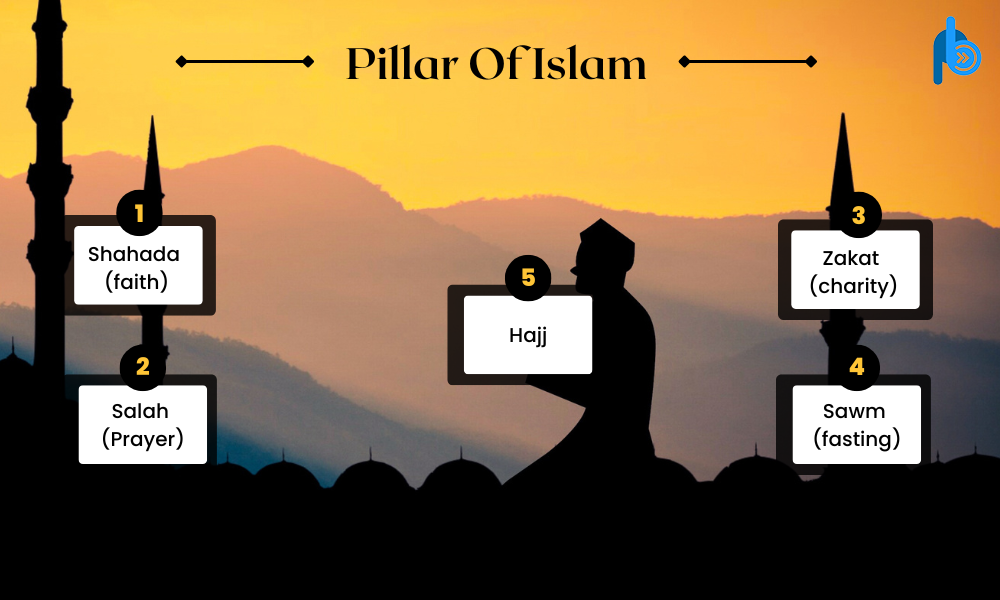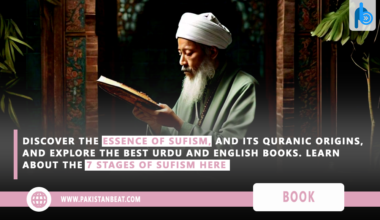Dhu al-Hijjah, the twelfth and final month of the Islamic lunar calendar, holds a uniquely significant place in the hearts of Muslims worldwide, especially due to the significance of Dhul Hijjah in Islamic tradition. This sacred period is synonymous with the annual pilgrimage known as Hajj, the fifth and final pillar of Islam. As millions of believers converge on the holy city of Mecca, they embark on a journey that is both deeply personal and a religious obligation. This article delves into the significance of Dhul Hijjah, exploring the rituals and the spiritual essence of Hajj. We will also examine the historical context, the personal stories of those who have undertaken this pilgrimage, and the deep-rooted values it embodies.
The Pillars of Islam: A Foundation of Faith

Islam is built upon five core pillars, which are the central practices that every Muslim is expected to observe:
- Shahadah (faith): The declaration of faith, proclaiming that there is no god but Allah and Muhammad is His messenger.
- Salah (prayer): Performing the five daily prayers.
- Zakat (charity): Giving alms to the poor and needy. This typically involves giving a portion of one’s wealth (usually 2.5% of savings annually) to those in need.
- Sawm (fasting): Observing the fast throughout the month of Ramadan.
- Hajj (pilgrimage): The pilgrimage to Mecca is obligatory at least once in a lifetime for physically and financially able Muslims.
Hajj: The Fifth Pillar and Its Historical Context

According to Islamic tradition, Ibrahim A.S was commanded by Allah to leave his wife Hajra (RA) and son Ismail AS in the barren land of Mecca. This was a test of faith for Ibrahim AS. Bibi Hajra (RA) was left alone with her child in a place devoid of tribe or village. As Ismail A.S cried from hunger and thirst, Hajra (RA) searched desperately for water, calling upon Allah for help. Ismail A.S continued to cry and beat his feet on the ground, and from this spot, a spring miraculously sprang forth, bubbling with water. This event, known as the Zamzam Well, is commemorated during the Hajj rituals. Later, Ibrahim and Ismail A.S were instructed to build the Kaaba, the sacred house of worship in Mecca. Allah commanded Ibrahim A.S to call upon humanity to perform pilgrimage to this holy site, establishing the tradition of Hajj for future generations. This historical narrative imbues Hajj with a deep sense of history and continuity.
The Rituals of Hajj: A Journey of Devotion

The rituals of Hajj are meticulously structured, each symbolizing various aspects of faith and the hardships faced by Prophet Ibrahim and his family. The key rituals include:
- Ihram: The state of religious purity and equality, symbolized by wearing simple white garments. This signifies the pilgrim’s intention and readiness to perform Hajj, leaving behind worldly distinctions and materialism.
- Tawaf: Pilgrims circumambulate the Kaaba seven times in a counter-clockwise direction, expressing their devotion to Allah.
- Sa’i: Pilgrims walk seven times between the hills of Safa and Marwa, reenacting Hajar’s determined search for water for her son Ismail.
- Standing at Arafat: On the ninth day of Dhul Hijjah, pilgrims gather on the plain of Arafat for an afternoon of prayer and supplication, seeking Allah’s forgiveness and mercy.
- Muzdalifah: Pilgrims collect pebbles and spend the night beneath the open sky, reflecting on the simplicity and humility of the journey.
- Ramy al-Jamarat: Pilgrims throw pebbles at three pillars in Mina, symbolizing the rejection of evil and the strength of faith.
- Sacrifice: Pilgrims offer an animal sacrifice, commemorating Ibrahim’s willingness to sacrifice his son in obedience to Allah. The meat is distributed to the poor and needy.
- Tawaf al-Ifadah: Pilgrims perform another circumambulation of the Kaaba, marking their renewed commitment to Allah.
- Tawaf al-Wada: The farewell circumambulation, completed before leaving Mecca, signifies the end of the pilgrimage.
A Journey of Self-Discovery
For many, Hajj is an opportunity for self-reflection and renewal. One pilgrim, Fatima, shares her experience: “Hajj became a journey that stripped away all my pretenses and took me face-to-face with my true self. Standing on the plains of Arafat, I felt a sense of peace and clarity that I had never experienced before. It became a moment of profound connection with Allah and a reminder of the purpose of my existence.”
Unity and Equality
Another pilgrim, Ahmed, speaks of the overwhelming sense of unity: “In Mecca, I stood shoulder-to-shoulder with millions of Muslims from every corner of the world. There were no distinctions of race, wealth, or status. We were all the same before Allah, united by our shared faith. It was a powerful reminder
The Spiritual Essence and the Significance of Dhul Hijjah
Dhul Hijjah transcends the physical rituals of Hajj. It’s a period of heightened religious devotion, particularly during the first ten days. Many Muslims around the world engage in increased acts of worship, fasting, and charitable giving. These days are considered some of the holiest in the Islamic calendar, offering believers an opportunity to draw closer to Allah.
Fasting and Repentance
Fasting during the first nine days of Dhul Hijjah, especially on the Day of Arafah, is highly recommended. It’s believed to purify the soul and bring great rewards. For those unable to perform Hajj, fasting on Arafah is a way to partake in the spiritual benefits of this sacred time.
Charity and Good Deeds
Dhul Hijjah also emphasizes the importance of charity and supporting those in need. Muslims are encouraged to perform good deeds, contribute to charitable causes, and increase kindness towards others. This spirit of generosity embodies the essence of Eid al-Adha, where the act of sacrifice symbolizes selflessness and care for the less fortunate.
Hajj: A Global Phenomenon
Hajj is not just a deeply personal journey; it’s a global phenomenon that unites Muslims from diverse backgrounds. This convergence of cultures and traditions fosters a sense of worldwide Muslim identity and solidarity.
Diverse Pilgrim Experiences
The stories of pilgrims from different parts of the world highlight the universal significance of Hajj. Whether it’s a young woman from Indonesia, an elderly man from Nigeria, or a family from Canada, each pilgrim’s journey is unique yet interconnected by their shared faith and purpose.
Challenges and Triumphs
Hajj presents significant logistical and emotional challenges. Pilgrims often face physical exhaustion, crowded conditions, and the intense heat of the Saudi Arabian desert. However, the spiritual rewards and the profound nature of the experience far outweigh these difficulties. The collective resilience of the pilgrims is a testament to the enduring spirit of Islam.
Technological Advancements and Modernization
Recent years have seen advancements in technology and infrastructure that have significantly improved the Hajj experience. The Saudi government has invested in expanding facilities, enhancing safety measures, and providing better services for pilgrims. Mobile apps, real-time updates, and improved transportation have made the pilgrimage more accessible and manageable, ensuring that the religious essence of Hajj remains intact while accommodating the needs of millions of pilgrims.
The Lasting Impact of Hajj
The Hajj journey leaves an indelible mark on the hearts and minds of those who undertake it. It’s a transformative experience that shapes their faith, character, and worldview. The lessons learned and values strengthened during Hajj continue to resonate long after the pilgrimage is over.
Renewed Faith and Commitment
For many, Hajj serves as a turning point in their religious lives. It strengthens their faith, deepens their knowledge of Islam, and reinforces their commitment to living according to its teachings. The sense of religious accomplishment and closeness to Allah experienced during Hajj inspires pilgrims to maintain their devotion and strive for excellence in their daily lives.
A Sense of Global Brotherhood
Hajj fosters a profound sense of solidarity and unity among Muslims worldwide. Shared experiences and interactions with fellow pilgrims from diverse cultures and backgrounds create lasting bonds and a feeling of global Muslim brotherhood. This spirit of cohesion transcends geographical and cultural boundaries, offering a sense of belonging to a larger, more diverse community of believers.
Spreading the Message of Peace and Compassion
The values of peace, compassion, and selflessness embodied in Hajj extend beyond the pilgrimage itself. Pilgrims often return to their communities with a renewed sense of purpose and the determination to spread these values. They become ambassadors of peace and compassion, working to build bridges of understanding and cooperation within their societies.
Accessibility and Logistics
The ever-increasing number of Muslims performing Hajj each year has presented significant logistical challenges for the Saudi Arabian government. Ensuring the safety and well-being of millions of pilgrims requires meticulous planning and coordination. Measures related to crowd management, healthcare services, and infrastructure development are crucial for managing the large influx of pilgrims. Technological advancements have also played a role in enhancing the Hajj experience, providing valuable information and support to pilgrims through mobile applications and online resources.
Environmental Concerns
The environmental impact of Hajj is a growing concern. The large number of pilgrims generates a significant amount of waste and puts pressure on local resources. Efforts are underway to promote sustainable practices, including waste reduction, recycling, and the use of green materials. These initiatives aim to lessen the environmental footprint of the pilgrimage while preserving its religious essence.
The Impact of COVID-19
The global COVID-19 pandemic has had a profound impact on Hajj and Eid al-Adha in recent years. In 2020, the pilgrimage was restricted to a limited number of domestic pilgrims, and strict health protocols were implemented to prevent the spread of the virus. This challenging situation highlighted the resilience and adaptability of the Muslim community. Alternative ways of observing the rituals, including digital gatherings and online sermons, were embraced, demonstrating the enduring significance of Dhul Hijjah even in the face of adversity.
Conclusion
Significance of Dhul Hijjah and the rituals of Hajj stand as a powerful testament to the enduring strength of faith. It’s a time for heightened devotion, spiritual renewal, and global Muslim unity. The lessons learned and the values embodied during this sacred period continue to guide and inspire believers long after the rituals are complete.
More from this Author: Quenching Thirst Naturally: Cucumber Water Benefits



























